Abstract
Actinomycetes were isolated from near-shore marine sediments collected at 15 island locations throughout the Bahamas. A total of 289 actinomycete colonies were observed, and all but 6 could be assigned to the suprageneric groups actinoplanetes and streptomycetes. A bimodal distribution in the actinomycete population in relation to depth was recorded, with the maximum numbers occurring in the shallow and deep sampling sites. This distribution can be accounted for by a rapid decrease in streptomycetes and an increase in actinoplanetes with increasing depth and does not conform to the theory that actinomycetes isolated from marine sources are of terrestrial origin. Sixty-three of the isolated actinomycetes were tested for the effects of seawater on growth. Streptomycete growth in nonsaline media was reduced by 39% compared with that in seawater. The actinoplanetes had a near obligate requirement of seawater for growth, and this is presented as evidence that actinomycetes can be physiologically active in the marine environment. Problems encountered with the enumeration of actinomycetes in marine sediments are also discussed.
Full text
PDF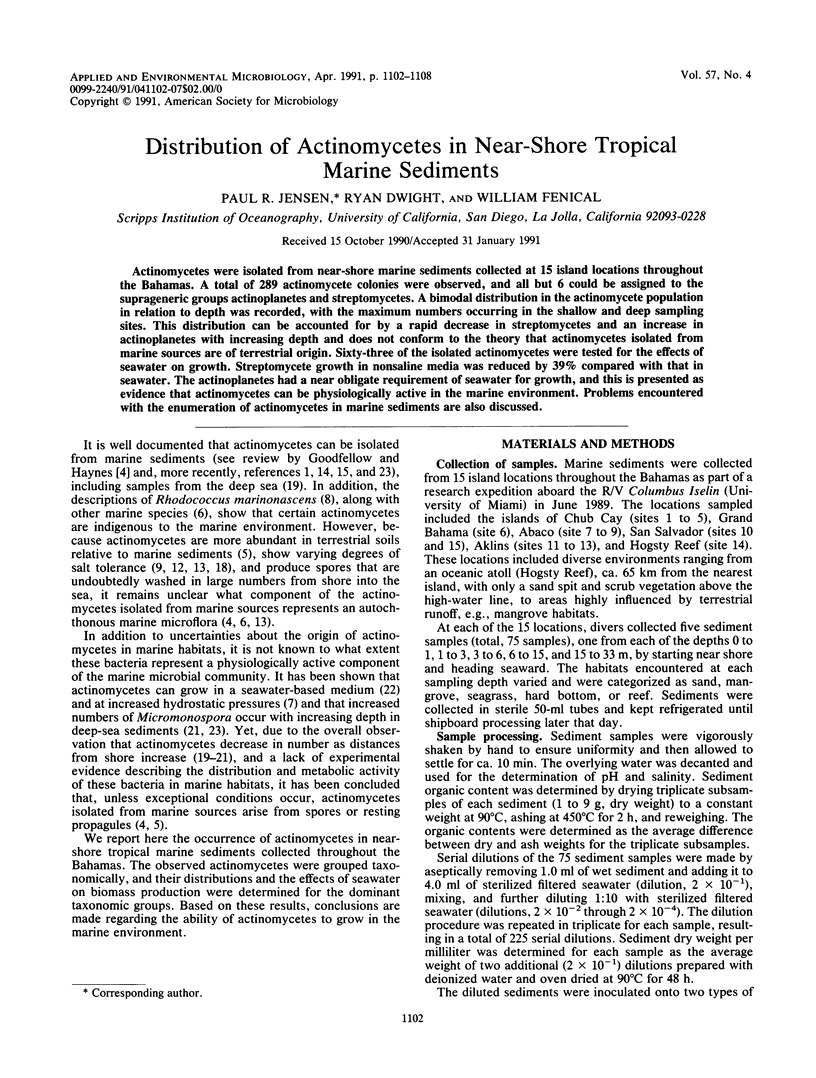
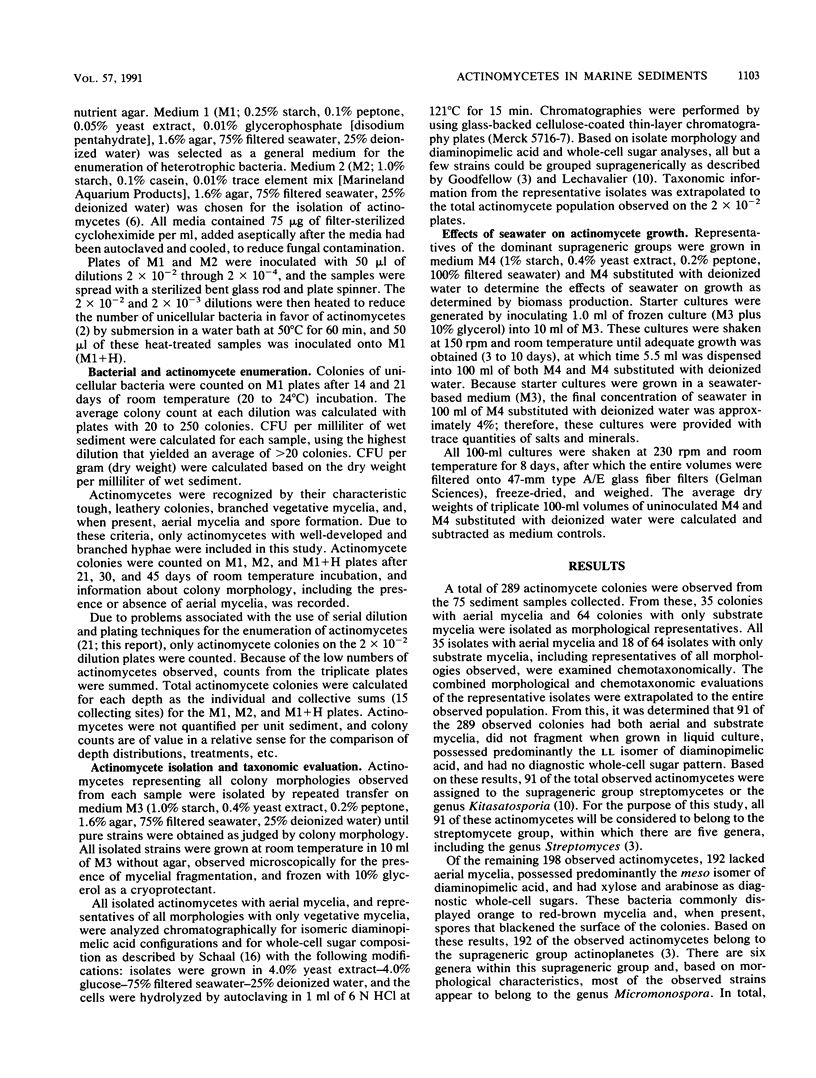
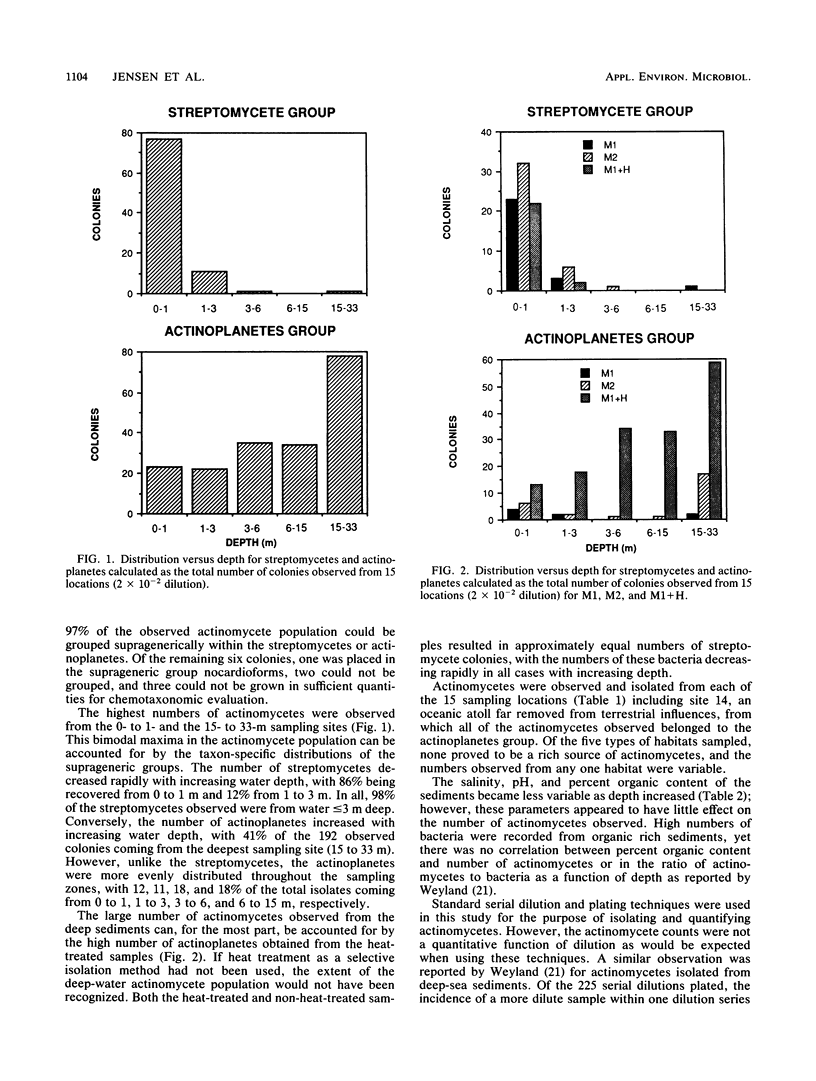
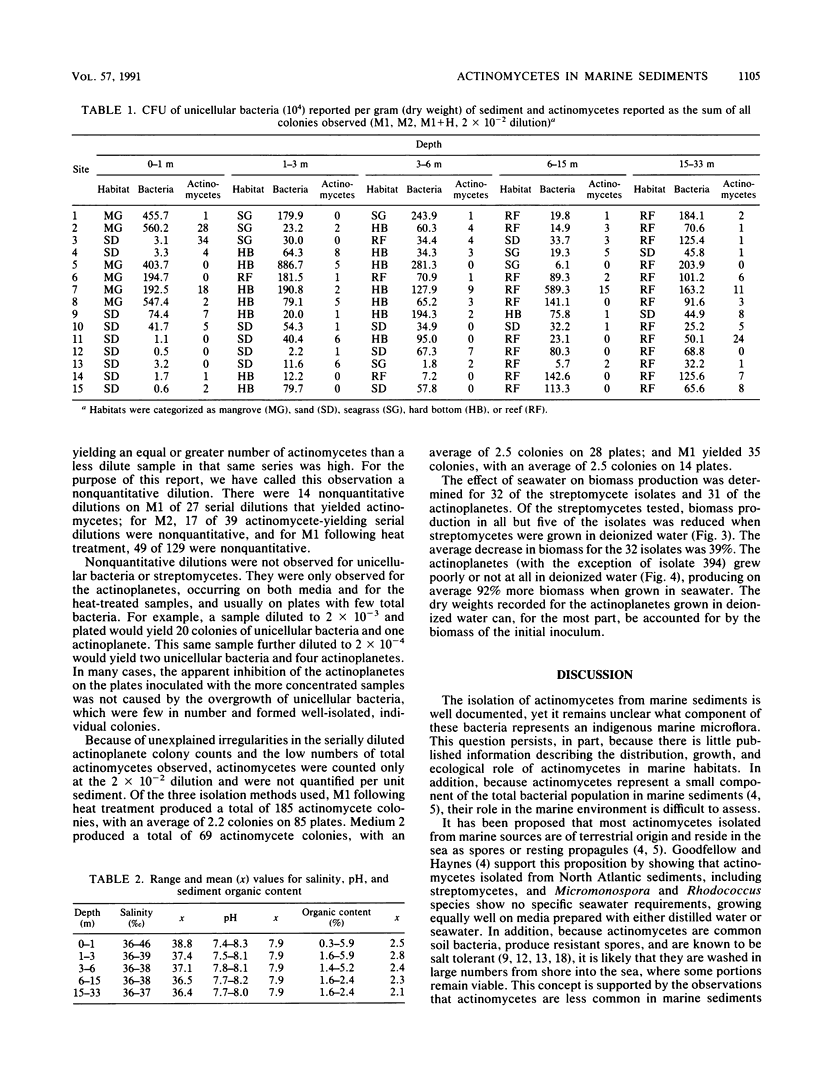
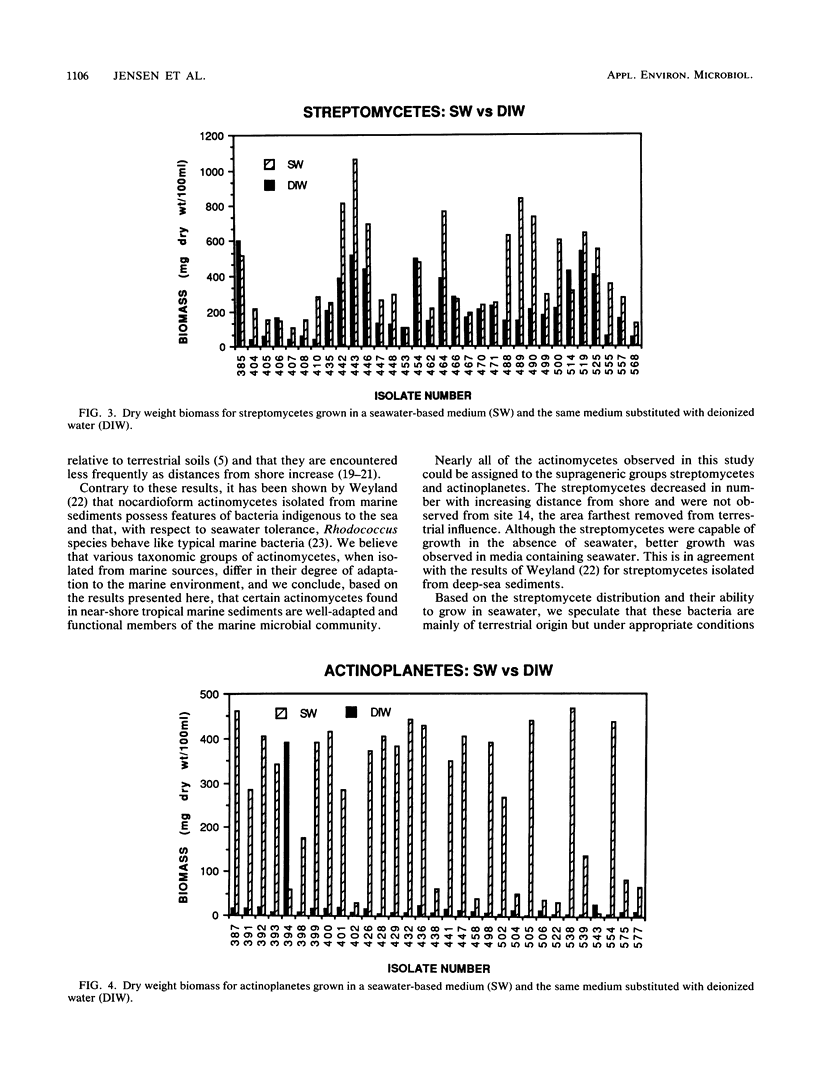
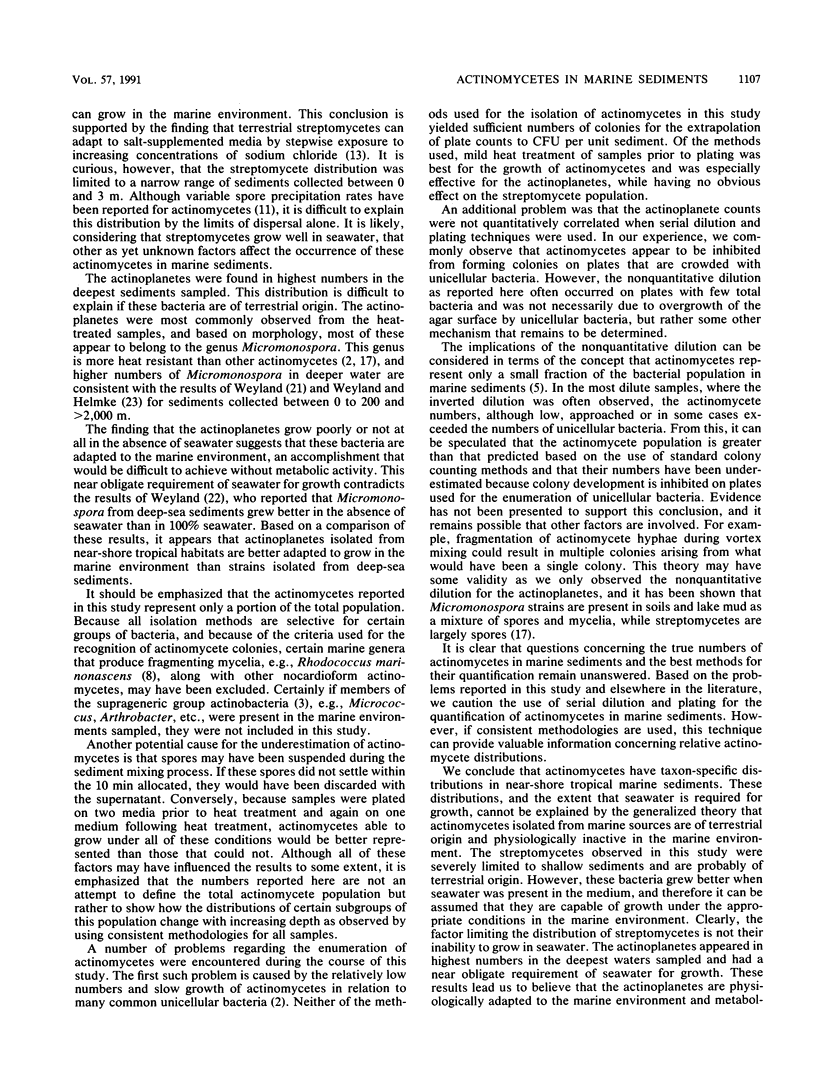
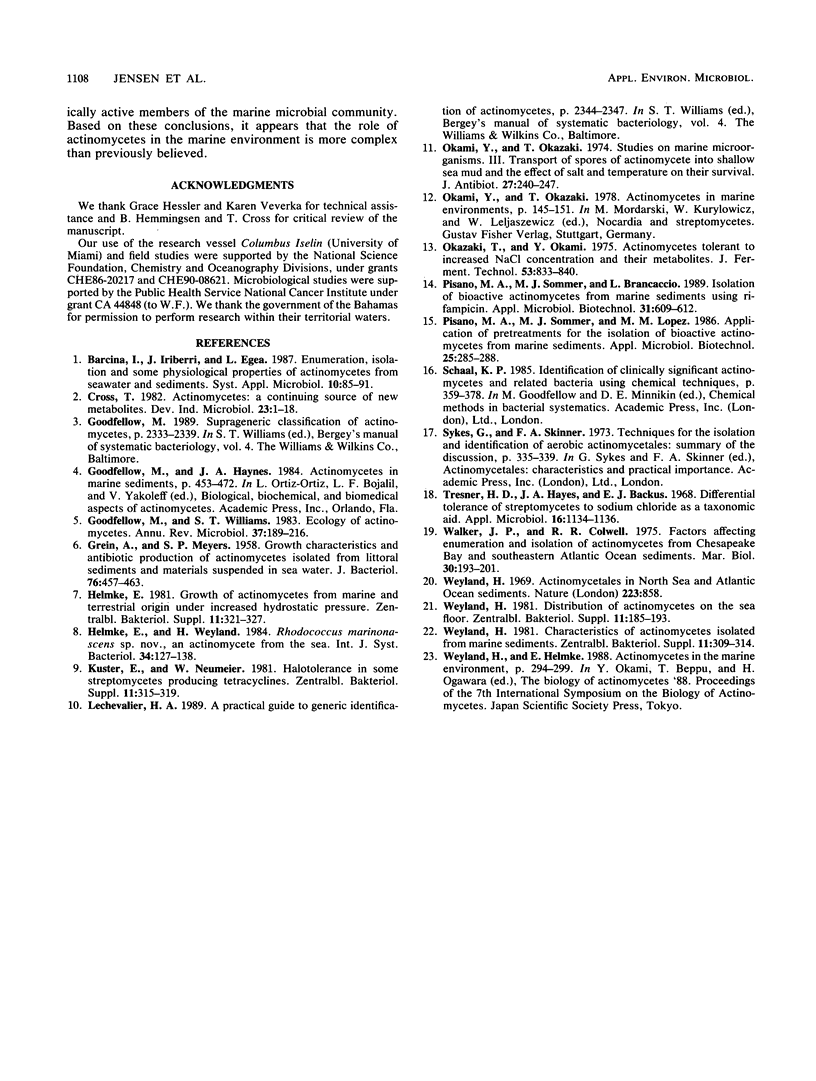
Selected References
These references are in PubMed. This may not be the complete list of references from this article.
- Fernández Pavón A., Vázquez J. J., García Muñoz M. S., Barbado F. J., López Pastor A., Arnalich F., Cuesta M. V., Gil A. Eosinofilia y alteraciones de la hemostasia. Rev Clin Esp. 1986 Oct;179(6):285–288. [PubMed] [Google Scholar]
- GREIN A., MEYERS S. P. Growth characteristics and antibiotic production of actinomycetes isolated from littoral sediments and materials suspended in sea water. J Bacteriol. 1958 Nov;76(5):457–463. doi: 10.1128/jb.76.5.457-463.1958. [DOI] [PMC free article] [PubMed] [Google Scholar]
- Goodfellow M., Williams S. T. Ecology of actinomycetes. Annu Rev Microbiol. 1983;37:189–216. doi: 10.1146/annurev.mi.37.100183.001201. [DOI] [PubMed] [Google Scholar]
- Okami Y., Okazaki T. Studies on marine microorganisms. 3. Transport of spores of actinomycete into shallow sea mud and the effect of salt and temperature on their survival. J Antibiot (Tokyo) 1974 Apr;27(4):240–247. [PubMed] [Google Scholar]
- Tresner H. D., Hayes J. A., Backus E. J. Differential tolerance of streptomycetes to sodium chloride as a taxonomic aid. Appl Microbiol. 1968 Aug;16(8):1134–1136. doi: 10.1128/am.16.8.1134-1136.1968. [DOI] [PMC free article] [PubMed] [Google Scholar]
- Weyland H. Actinomycetes in North Sea and Atlantic Ocean sediments. Nature. 1969 Aug 23;223(5208):858–858. doi: 10.1038/223858a0. [DOI] [PubMed] [Google Scholar]


